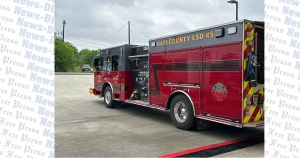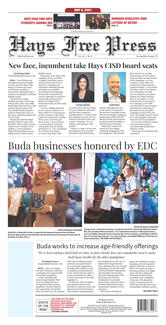
By Brittany Anderson
HAYS COUNTY — License plate reader cameras have been a controversial topic in local, state and national communities, but many law enforcement officials maintain that they promote public safety above all else.
The Hays County Commissioners Court unanimously approved an agreement for traffic monitoring cameras with Flock Safety during the regular commissioners court meeting on Aug. 30.
The city of Buda recently had similar conversations regarding Flock Safety cameras, u...
By Brittany Anderson
HAYS COUNTY — License plate reader cameras have been a controversial topic in local, state and national communities, but many law enforcement officials maintain that they promote public safety above all else.
The Hays County Commissioners Court unanimously approved an agreement for traffic monitoring cameras with Flock Safety during the regular commissioners court meeting on Aug. 30.
The city of Buda recently had similar conversations regarding Flock Safety cameras, unanimously voting to establish an operating policy with the local police department for the cameras.
While some residents have expressed privacy concerns, Hays County Deputy Sheriff Mike Davenport said that the cameras serve as an investigative tool, as well as to find missing and endangered people.
“There are no citations written off of this camera,” Davenport said. “It serves quite a few different investigative purposes. Without going into detail, we investigated a murder not too long ago, that had we had this camera up there, we would’ve recognized the car that dropped the body off.”
The cameras take a photo of the back end of the vehicle, capturing the license plate number which can then be checked against state and national criminal databases. Davenport said that they will be placed in strategic locations along county roads and highways, namely ones that garner high traffic, and will not be hidden, do not have facial recognition technology and do not operate like a red light camera.
“The great benefit we get out of this is, when you see on signs that there’s an Amber Alert or Silver Alert, if one of these cameras picks up that car, they notify us immediately,” Davenport said, noting that this system was recently used in Austin to locate a wanted car in the Cedar Park area.
Currently, the agreement approves six cameras, although only two can be placed now. Davenport explained that two are within the county’s right-of-way (ROW) and planned at Bebee Road/Goforth Road and along Highway 21.
There are more cameras planned for the west side of the county, but they’re within the state’s ROW, meaning state approval will have to be given first. Other locations planned are on Highway 290, east of Dripping Springs, and the Ranch Road 12 area, south of Dripping Springs and north of 150.
“That’s where we want it, [but] the state hasn’t approved it yet, and we may have to move them,” Davenport said. “Some of these we’ve had to move already. So they’re not set in stone.”
According to agenda documents, the Year 1 total for the cameras totals $17,100. The recurring total will be $15,000, as there will not be a $2,100 professional services implementation fee. Each camera costs $2,500.
With six cameras initially approved, Davenport said there are some intentions in the future to expand as the county grows, and to add them to different locations as deemed fit.















